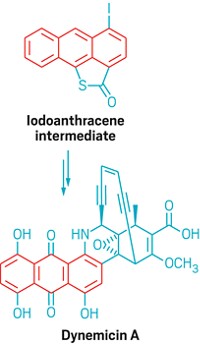Advertisement
Grab your lab coat. Let's get started
Welcome!
Welcome!
Create an account below to get 6 C&EN articles per month, receive newsletters and more - all free.
It seems this is your first time logging in online. Please enter the following information to continue.
As an ACS member you automatically get access to this site. All we need is few more details to create your reading experience.
Not you? Sign in with a different account.
Not you? Sign in with a different account.
ERROR 1
ERROR 1
ERROR 2
ERROR 2
ERROR 2
ERROR 2
ERROR 2
Password and Confirm password must match.
If you have an ACS member number, please enter it here so we can link this account to your membership. (optional)
ERROR 2
ACS values your privacy. By submitting your information, you are gaining access to C&EN and subscribing to our weekly newsletter. We use the information you provide to make your reading experience better, and we will never sell your data to third party members.
Biological Chemistry
Trifecta Chemistry Fashions Prebiotic Purine Precursors
A three-component reaction suggests a pathway by which all four RNA building blocks might have arisen
by Carmen Drahl
November 15, 2010
| A version of this story appeared in
Volume 88, Issue 46
Last year, chemists at the University of Manchester, in England, made headlines in the origin-of-life field by developing a recipe for pyrimidine ribonucleotides, which are two of the four fundamental units of RNA, that works under conditions thought to be feasible during Earth’s earliest days (C&EN, Dec. 21, 2009, page 37). Part of that team—John D. Sutherland, now at the University of Cambridge, and Matthew W. Powner, now a postdoctoral fellow with Jack W. Szostak at Harvard University—has found a three-component reaction that makes precursors of the pyrimidines’ purine counterparts (J. Am. Chem. Soc., DOI: 10.1021/ja108197s). The reaction runs in water and combines a variety of aldehydes (blue) with a 5-aminoimidazole (red) and a 2-aminooxazole (green). The imidazole can arise from cyanide tetramers and has been studied as a purine precursor, and the oxazole is a building block the team relied on in the previous study. “What’s key about this work is that it plays off the same chemistry that so robustly takes you to the pyrimidines,” because in the origin-of-life field it’s important to find chemical pathways by which the four ribonucleotides may have come about, explains RNA researcher Gerald F. Joyce of Scripps Research Institute.





Join the conversation
Contact the reporter
Submit a Letter to the Editor for publication
Engage with us on Twitter